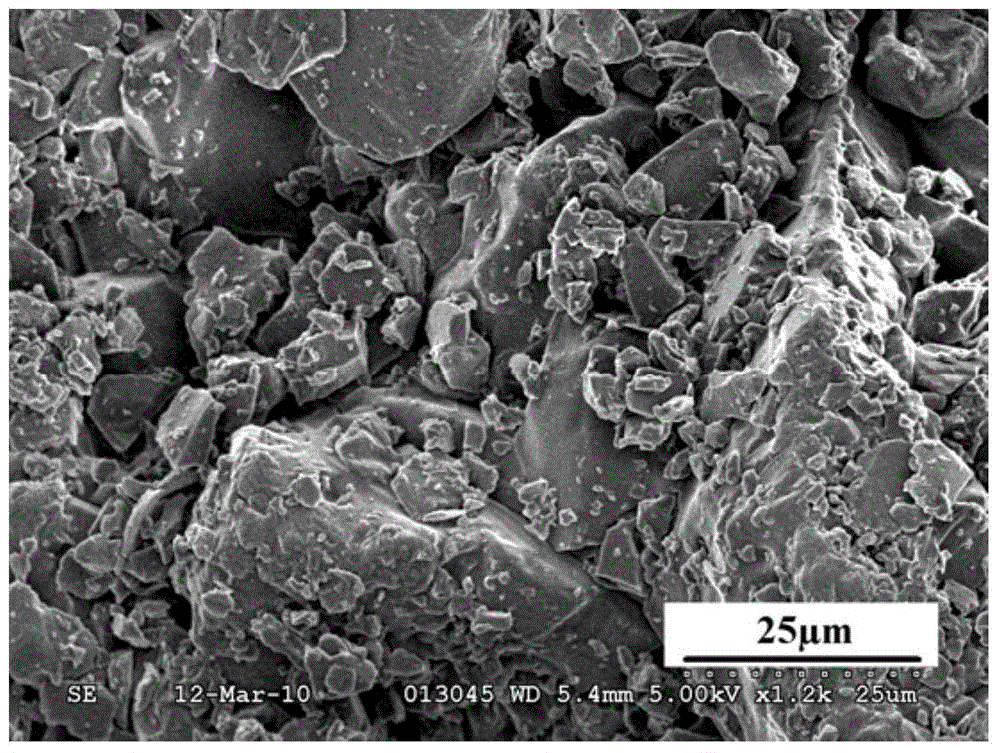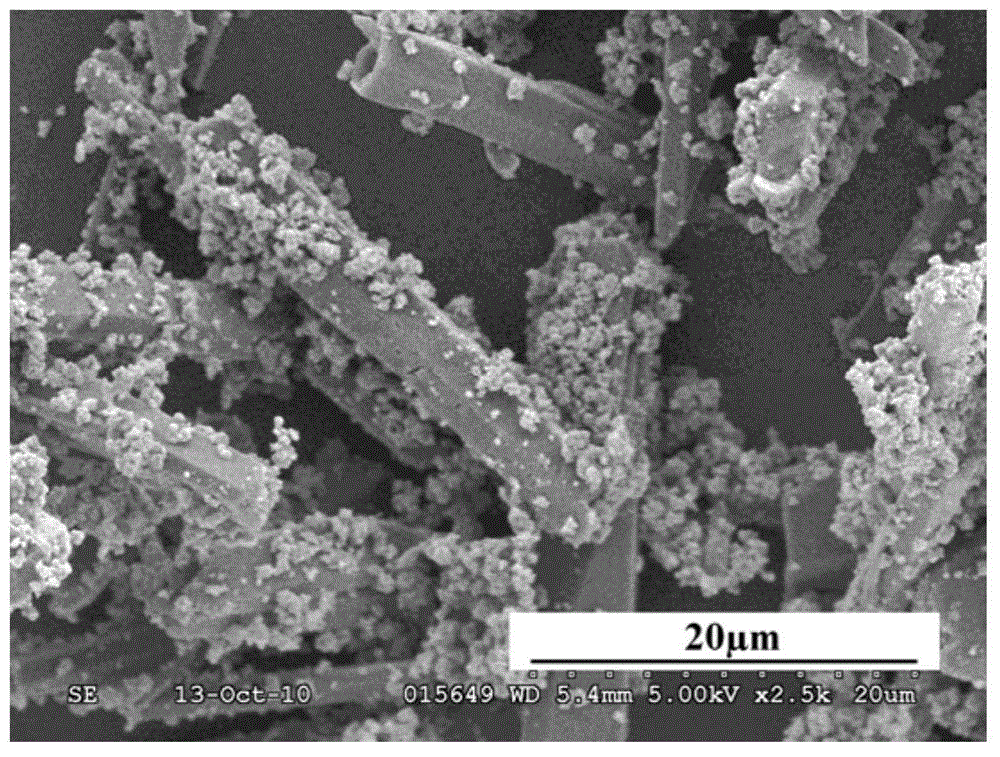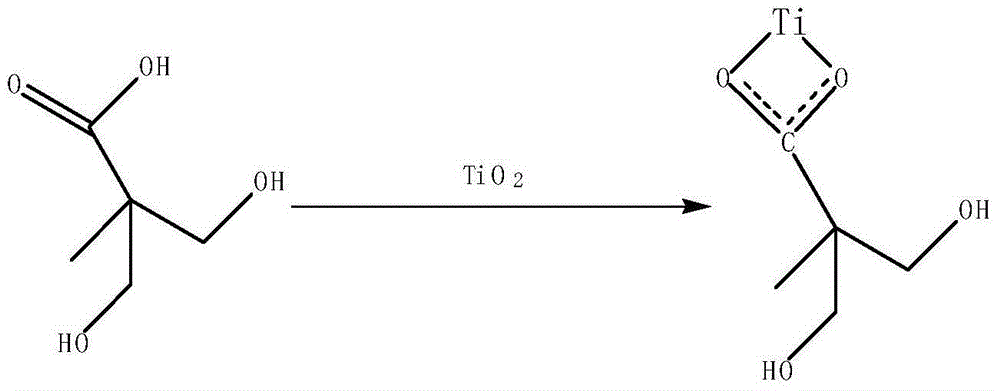Modification method for nanometer titania
A nano-titanium dioxide and modification technology, applied in the direction of dyeing low-molecular-weight organic compounds, fibrous fillers, etc., can solve the problems of uniform dispersion, nano-titanium dioxide cannot be stably dispersed, and does not have photocatalytic performance, etc., and achieves good technical effects.
- Summary
- Abstract
- Description
- Claims
- Application Information
AI Technical Summary
Problems solved by technology
Method used
Image
Examples
Embodiment 1
[0021] 2, the preparation method of 2-dimethylolpropionic acid modified nano-titanium dioxide:
[0022] After calcining, 1g of nano-titanium dioxide (average particle diameter is 500nm) and 4g of dried 2,2-dimethylolpropionic acid (electron microscope as shown in Fig. figure 1 Shown) placed in 45ml isopropanol (35.35g), ultrasonic dispersion treatment for 1 hour;
[0023] Under the protection of dry nitrogen, the reaction was continued at 80°C for 24 hours;
[0024] The solid particles were separated in a centrifuge, and then the separated particles were redissolved in 30ml (23.754g) of methanol, and separated again until the solution was clear;
[0025] The finally separated 2,2-dimethylolpropionic acid-modified nano-titanium dioxide is placed in a vacuum oven for drying treatment.
[0026] The 2,2-dimethylolpropionic acid-n-titanium dioxide electron microscope picture after the coordination reaction obtained figure 2 shown.
Embodiment 2
[0028] 2, the preparation method of 2-dimethylolpropionic acid modified nano-titanium dioxide:
[0029] After calcining, place 2g of nano-titanium dioxide (average particle size is 300nm) and 6g of dried 2,2-dimethylolpropionic acid in 60ml of isopropanol, and ultrasonically disperse for 0.5 hour;
[0030] Under the protection of dry nitrogen, the reaction was continued at 70°C for 30 hours;
[0031] Separate the solid particles in a centrifuge, then redissolve the separated particles in 50ml of methanol, and separate again until the solution is clear;
[0032] The finally separated 2,2-dimethylolpropionic acid-modified nano-titanium dioxide is placed in a vacuum oven for drying treatment.
Embodiment 3
[0034] 2, the preparation method of 2-dimethylolpropionic acid modified nano-titanium dioxide:
[0035] After calcining, 1.5g of nano-titanium dioxide (average particle size is 500nm) and 5g of dried 2,2-dimethylolpropionic acid are placed in 50ml of isopropanol, and ultrasonically dispersed for 1.5 hours;
[0036] Under the protection of dry nitrogen, the reaction was continued at 90°C for 20 hours;
[0037] Separate the solid particles in a centrifuge, then redissolve the separated particles in 45ml of methanol, and separate again until the solution is clear;
[0038] The finally separated 2,2-dimethylolpropionic acid-modified nano-titanium dioxide is placed in a vacuum oven for drying treatment.
PUM
| Property | Measurement | Unit |
|---|---|---|
| particle size | aaaaa | aaaaa |
| particle size | aaaaa | aaaaa |
Abstract
Description
Claims
Application Information
 Login to View More
Login to View More - R&D
- Intellectual Property
- Life Sciences
- Materials
- Tech Scout
- Unparalleled Data Quality
- Higher Quality Content
- 60% Fewer Hallucinations
Browse by: Latest US Patents, China's latest patents, Technical Efficacy Thesaurus, Application Domain, Technology Topic, Popular Technical Reports.
© 2025 PatSnap. All rights reserved.Legal|Privacy policy|Modern Slavery Act Transparency Statement|Sitemap|About US| Contact US: help@patsnap.com



